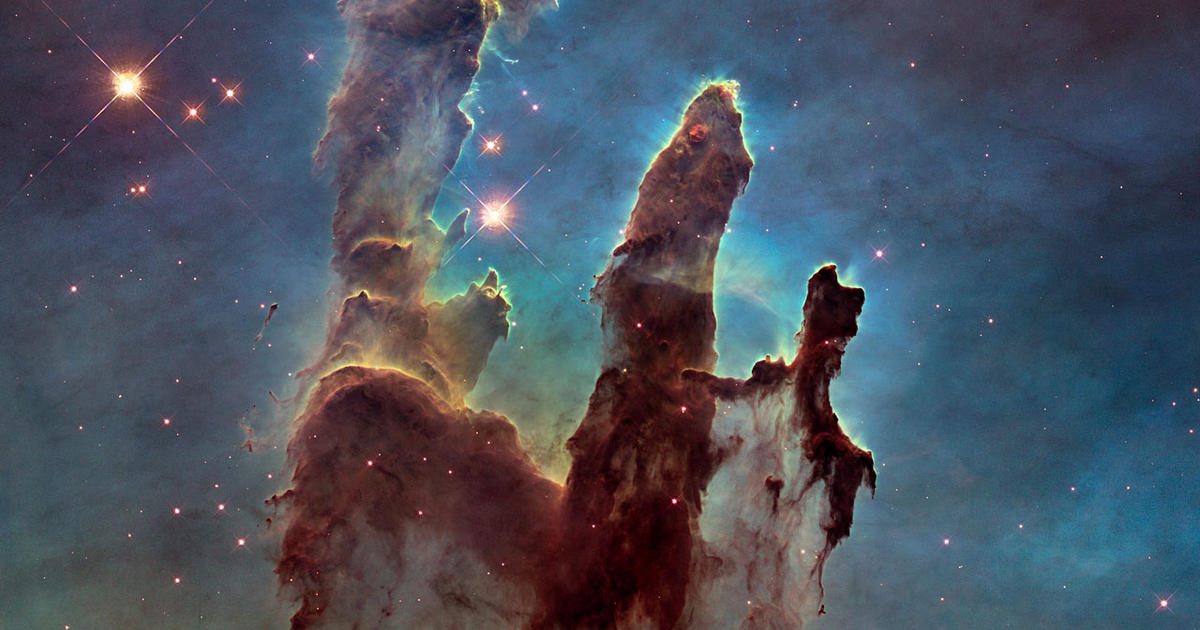The Hubble Space Telescope has made ten groundbreaking discoveries since it was launched into low Earth orbit in 1990. Among these discoveries are determining the age of the universe, confirming the existence of dark energy, discovering new planets, witnessing the formation of stars and galaxies, and finding evidence of water on distant planets. The Hubble has also helped revise our understanding of the rate at which stars form, observe the universe’s earliest galaxies, provide clues about the fate of the universe, and improve our knowledge of the large-scale structure of the universe. Despite the next generation of space telescopes being on the horizon, the Hubble’s mission will continue as long as its instruments remain functional, expanding our knowledge of the universe with each new discovery.
10 Discoveries Made by the Hubble Space Telescope
The Hubble Space Telescope (HST) is a space telescope that was launched into low Earth orbit in 1990 and is still operating. It was named after astronomer Edwin Hubble, and it’s been instrumental in many scientific discoveries since its inception. With a clear view of the universe free from the obscuring effects of Earth’s atmosphere, Hubble has allowed scientists to see further into the universe and make many groundbreaking discoveries. Here are ten of those discoveries:
1. Determining the Age of the Universe
One of Hubble’s most significant contributions to the field of cosmology was to determine a more precise estimate of the age of the universe, currently valued at about 13.8 billion years. By observing Cepheid variables (a type of star that pulsates regularly) in distant galaxies, Hubble helped astrophysicists develop a better understanding of the universe’s expansion rate and its likely age.
2. Confirming Dark Energy’s Existence
Scientists had long suspected the existence of dark energy, an enigmatic force that appears to be responsible for the accelerating expansion of the universe. Hubble further confirmed its existence by observing the cosmic microwave background radiation and measuring the distances between some of the most distant galaxies in the universe. Dark energy’s existence changed our understanding of the universe forever.
3. Discovering New Planets
The HST has helped discover many planets outside our solar system, called exoplanets. It spotted planets near other stars using several techniques, including gravitational microlensing, the transit method, and direct imaging. These discoveries have advanced our understanding of how planetary systems form and evolve throughout the universe.
4. Witnessing the Formation of Stars and Galaxies
With its unprecedented view of the cosmos, Hubble has given us a front-row seat as galaxies and stars form throughout the universe. Its images have allowed scientists to study the processes of star formation and galaxy formation in ways never before possible, deepening our understanding of how these cosmic structures come to be.
5. Finding Evidence of Water on Distant Planets
Astronomers have been on the hunt for other habitable planets beyond our solar system for decades, and Hubble has helped in the search by detecting evidence of water on several different exoplanets. These findings raise the possibility of finding extraterrestrial life.
6. Discovering New Types of Black Holes
Through its observations, Hubble has helped in the discovery of several different categories of black holes, each with its own defining characteristics. Among these are intermediate-mass black holes and ultra-luminous X-ray sources, which are believed to be black holes gobbling up matter from nearby stars.
7. Revising Our Ideas About the Rate of Star-Formation
One of Hubble’s most significant contributions is its ability to measure the rate at which stars form throughout the cosmos. The HST’s data has allowed scientists to revise earlier estimates, showing that stars are forming at a slower rate than previously thought. This finding has important implications for our understanding of the evolution of galaxies.
8. Observing the First Galaxies That Formed After the Big Bang
Hubble’s space-based view allows it to capture the earliest light in the universe, which—given the vast distances involved—appears as it did billions of years ago. These observations have allowed scientists to study the first galaxies that formed in the aftermath of the Big Bang and learn more about the universe’s early evolution.
9. Providing Clues About the Fate of the Universe
According to current theories, the universe will continue expanding indefinitely, but this could change depending on the amount of dark matter in the universe. Hubble is helping scientists get a better understanding of this by measuring the amount of dark matter present in the universe and its distribution in space.
10. Improving Our Understanding of the Large-Scale Structure of the Universe
With Hubble’s help, scientists have been able to map the distribution of galaxies throughout the observable universe, giving us a better understanding of its overall structure. These maps have revealed an intricate web of galaxy clusters and filaments surrounding vast, empty voids.
The Future of the Hubble Space Telescope
With such a remarkable track record, it’s no wonder that astronomers are anxiously awaiting the next generation of space telescopes. Still, Hubble’s mission isn’t yet over—the telescope will continue exploring the cosmos for as long as its instruments keep functioning. With each new discovery, Hubble expands our understanding of the universe and reaffirms our place in it.
